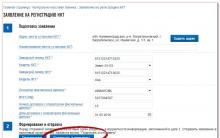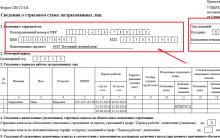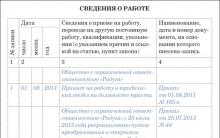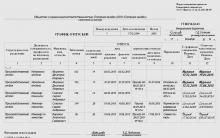When conducting business activities, many organizations and individual entrepreneurs make payments using cash. Currently, there is an approved limit for cash settlements in the implementation of entrepreneurial activities, it is 100 thousand rubles under one contract.
To account for cash, there are a number of legally approved documents. One of these documents is a cash receipt.
An incoming cash order (PKO) is a unified cash document that reflects the receipt of cash from various sources. The form of the incoming cash order KO-1 was approved by Decree No. 88 of 08/18/1998, it cannot be modified, added or deleted any sections and indicators.
Cash receipts at the cash desk can have the following purposes:
- cash receipts from settlement accounts;
- revenue from customers;
- return unused ;
- return of loans, compensation for damage;
- contributions from the founders to the authorized capital.
Registration of PKO is mandatory for any receipt of funds at the cash desk of an organization or entrepreneur. Acceptance of funds without registration of PKO is a violation of cash discipline and is punishable by fines that are imposed on an official in the amount of 4 to 5 thousand rubles and on an organization in the amount of 40 to 50 thousand rubles.
Partial or complete non-receipt of cash under PKO entails distortion of data in accounting and tax accounting, as well as accounting indicators. During a tax audit, this shortcoming will be regarded as a gross violation of accounting rules, for which penalties are provided for an official.
How to issue a cash receipt
Upon receipt of funds, the cashier draws up a PKO in one copy. It should be noted that corrections and blots are strictly prohibited in cash documents, this makes them invalid. If the cashier made a mistake when filling out the PKO, it is necessary to issue a new document to replace the damaged one.
The form of an incoming cash order consists of two parts - an incoming cash order and a receipt for the PKO. At the end of the day, the receipt cash order is filed with the cashier's report (tear-off sheet of the cash book), and the receipt for the PKO is given to the person depositing the money.
An example of filling in a cash receipt order in the form of KO-1
Let us consider in detail the procedure for filling out the PKO. Below is a sample of filling out a cash receipt order.

The current sample of the form of an incoming cash order for 2013-2014. can be downloaded for free in or .
In line "Document Number" the PKO number is indicated, the numbering is carried out from the beginning of the year automatically or manually using the PKO registration log.
In line "Document date" indicates the date the funds were deposited in the cash register.
In line "Debit" account 50 is indicated, entrepreneurs do not fill out this line, since they do not use the chart of accounts.
Line "Code of the structural unit" filled by separate divisions of the organization.
In line "Corresponding account" the credit of the account corresponding to the source of receipt of funds is indicated. Entrepreneurs also leave this field blank. Upon receipt of retail revenue, the credit of account 90.1 is indicated. The receipt of funds from the current account is reflected in the credit of account 51. When an advance payment or payment is received from the buyer, the credit of account 62 is indicated. The return of accountable funds is recorded in the credit of account 71. Various receipts from employees of the organization, for example, compensation for damage, shortfalls are reflected in the credit of account 73. Contributions from the founders are reflected in correspondence with the credit of account 75.Line "Analytical Accounting Code" filled in if there are codes according to the analytical accounting system.
In line "Sum" the amount of money received is indicated in figures.
Line "Destination code" filled in by non-profit organizations, if the funds were received in the order of targeted funding.
In the "Received from" field, the full name of the individual or the name of the organization from which funds are received is indicated.
In line "Base" in the incoming cash order, the nature of the receipt of funds is indicated, for example, proceeds from customers, withdrawn by check, and the like.
In line "Sum" the amount of funds received is indicated in words. It is important that if earlier the amount in figures was indicated without kopecks, then the amount in words is also indicated without kopecks. If the amount with kopecks is indicated, then whole rubles are indicated in words, and kopecks in numbers. The remaining free field is crossed out.
In line "Including" the rate and amount (in figures) of VAT are indicated, if any, or a mark is made “excluding VAT”.
In field "Appendix" the details of the document on which the funds were received are reflected, for example, the date and number of the consignment note, the details of the bank check, the delivery agreement.
Who signs the cash receipt order? PKO is signed by the cashier and the chief accountant. The receipt for the incoming cash order duplicates the information contained in the cash order. The receipt for the PKO is certified by the seal of the enterprise. The imprint of the seal must be completely located on the field of the receipt and be readable.
Filling in cash receipt orders online and using programs
 The law allows to draw up PKO not only manually, but also in typewritten form using automated tools and various online accounting services. Attention! Due to recent changes in legislation, the legal information in this article may be out of date! Our lawyer can advise you free of charge - write a question in the form below:
The law allows to draw up PKO not only manually, but also in typewritten form using automated tools and various online accounting services. Attention! Due to recent changes in legislation, the legal information in this article may be out of date! Our lawyer can advise you free of charge - write a question in the form below:











How to issue a power of attorney to represent the interests of an LLC to an individual?
How to apply for an IP: step by step instructions
Form of power of attorney to receive goods or material assets
The deadline for registering an individual entrepreneur in the tax
Business plan for a law firm: an example with calculations legal support for a business